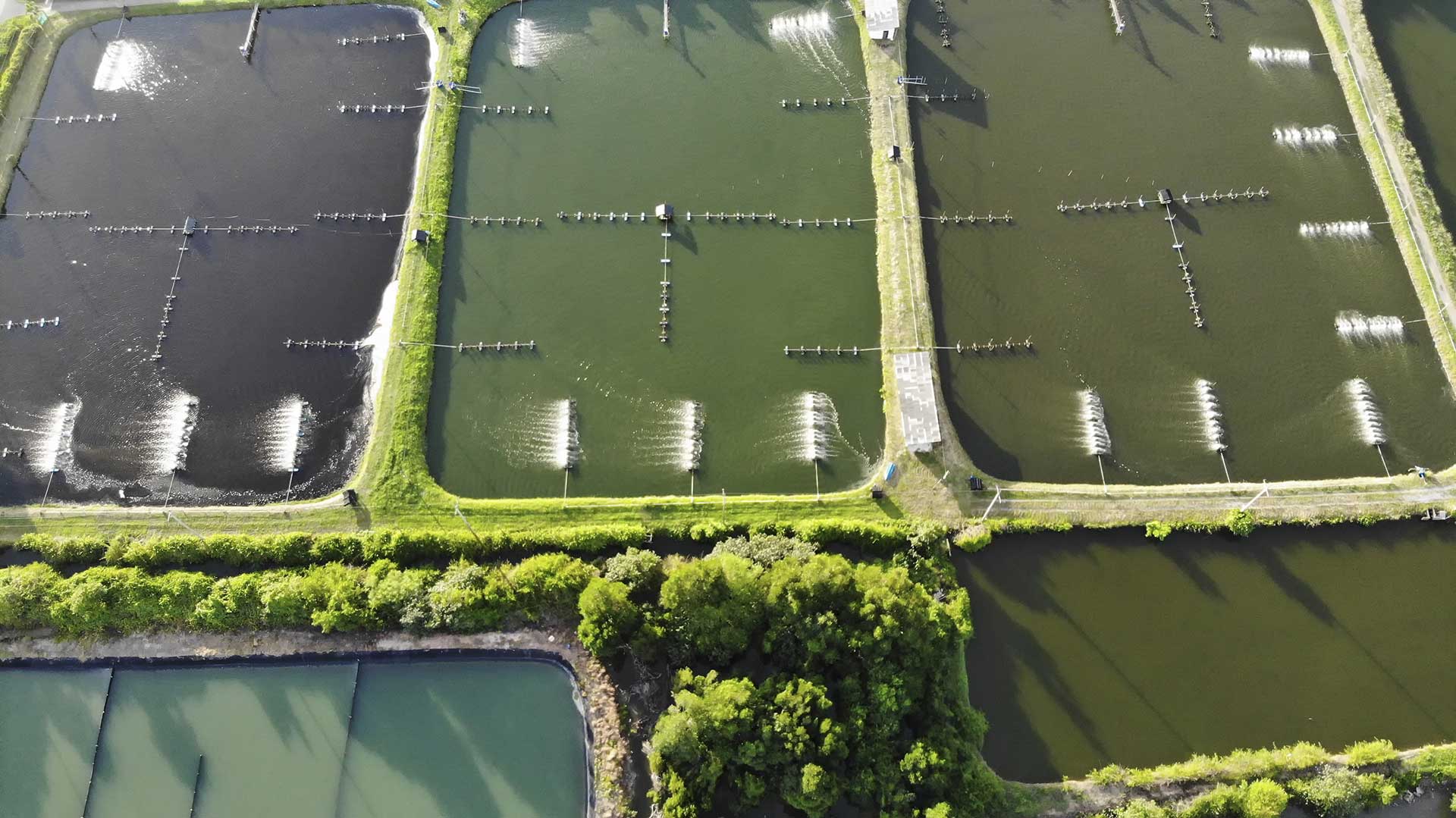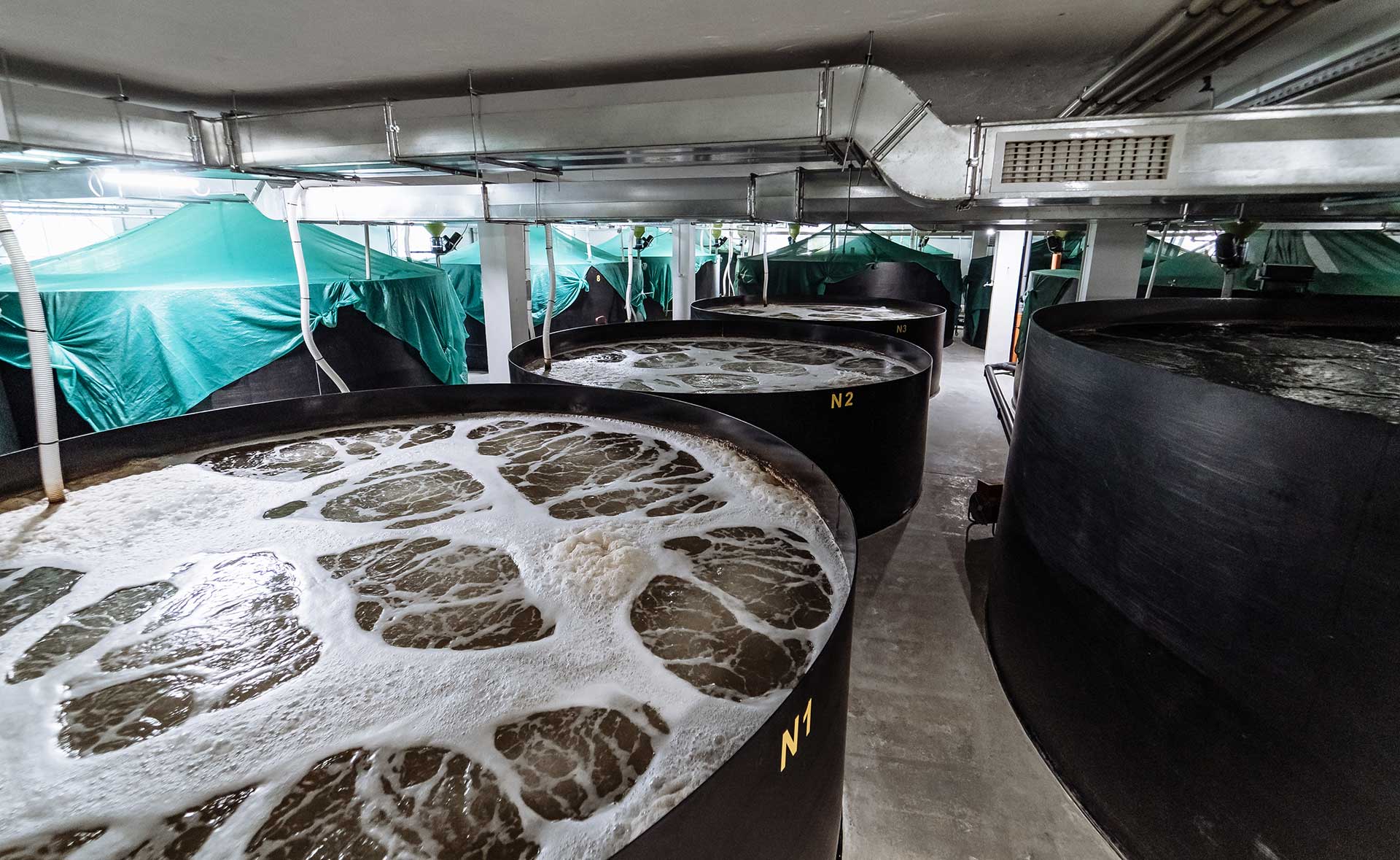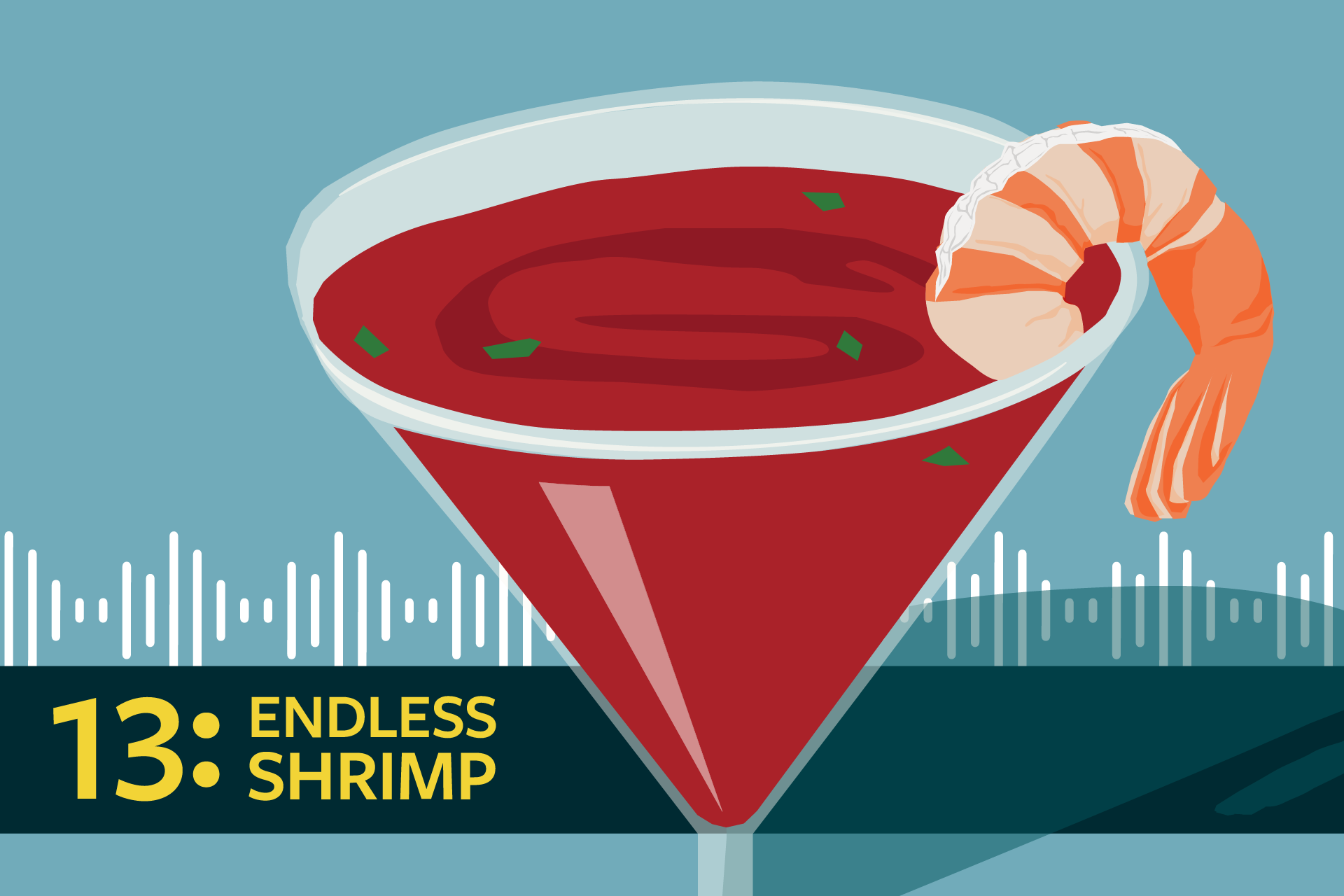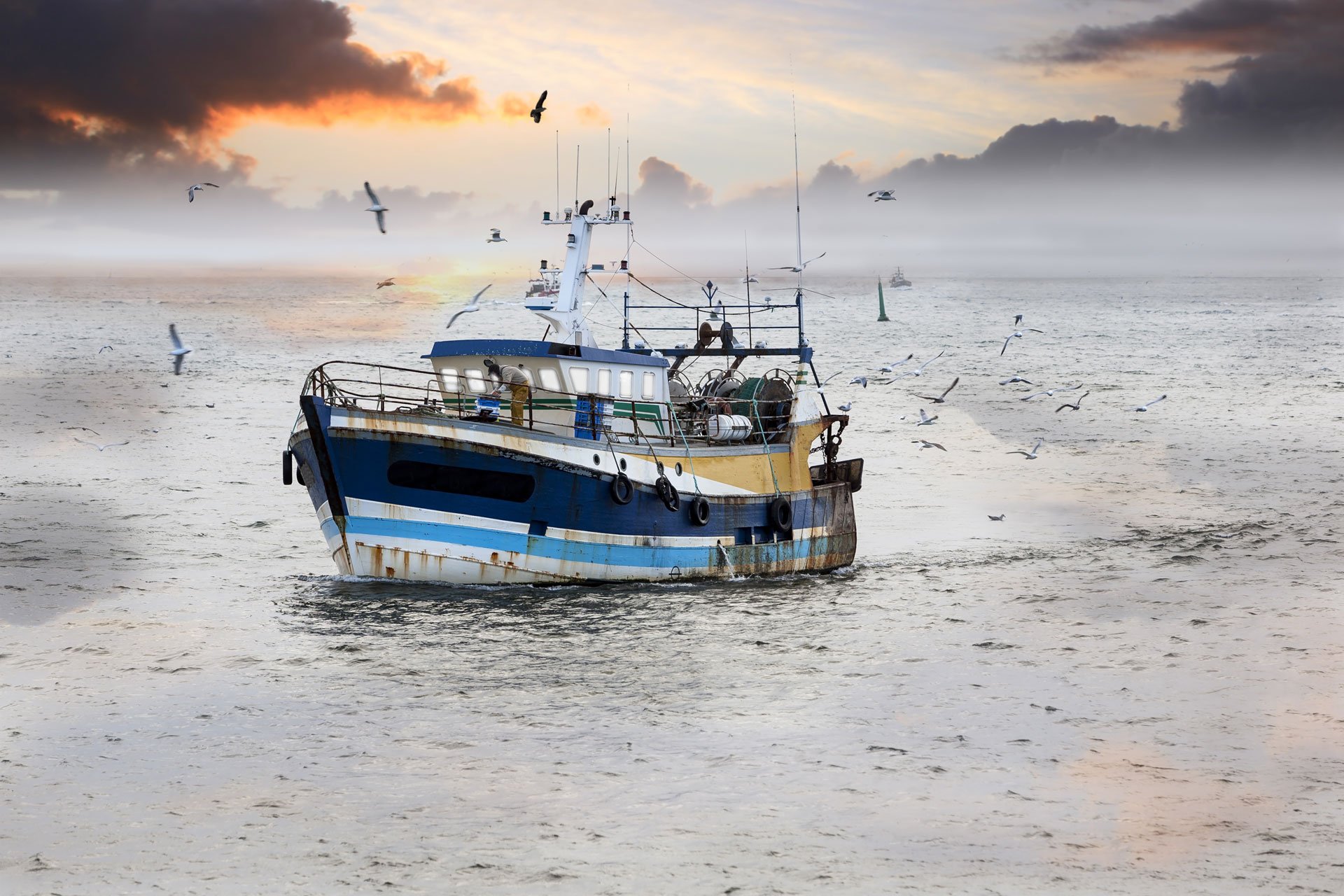What you need to know about wild and farmed shrimp
Jumbo cocktail shrimp. Extra jumbo cooked shrimp. Raw simple peel farmed shrimp. Budweiser beer battered shrimp. Shrimp for tacos. Shrimp jambalaya bowl. Shrimp ramen. Shrimp mac ‘n cheese.
Rather than a quote from Forrest Gump, this is a far-from-exhaustive list of the kinds of frozen shrimp that were available for purchase at a Baltimore supermarket one night in October, 2019. And it’s a visual manifestation of Americans’ seemingly insatiable appetite for shrimp. “It’s become the chicken of the sea,” said Marianne Cufone, an environmental attorney who is the founder and director of the Recirculating Farms Coalition and who previously directed the fish and oceans program at Food and Water Watch. “It used to be tuna, and now it’s shrimp.”
According to the National Fisheries Institute, the average American ate 4.4 pounds of shrimp in 2017. That number is almost as high as the second and third most popular seafood choices — salmon and canned tuna — combined.
Once considered a delicacy served at weddings and holiday parties, all-you-can-eat shrimp is now on the menu at Red Lobster during its “Endless Shrimp” promotion for $15.99. “When something gets cheaper, you have to ask why,” Cufone said.
Where is your shrimp from?
Over 90 percent of the shrimp eaten in the United States is imported, and the problems start with the complicated global supply chain. “It’s very difficult to know where your shrimp is coming from,” said Ryan Bigelow, a senior project manager for Monterey Bay Aquarium’s Seafood Watch initiative. Most of it comes from Southeast Asian countries like Indonesia, India, Thailand and Vietnam, Bigelow explained, where environmentally destructive practices are common.
Complicated, long supply chains make it difficult to track fishery management, farm methods, and labor practices. They can also result in excess greenhouse gases being emitted as your shrimp travels around the world. For example, a bag of wild-caught Argentine red shrimp for sale at Giant in Maryland was labeled as a product of Argentina and processed in Thailand — meaning it had traveled, at a minimum, from South America to Asia to North America.
How catching shrimp impacts ocean ecosystems due to bycatch
Some shoppers might opt for that bag of wild shrimp over others based on the mistaken assumption that wild-caught seafood is always healthier and more sustainable than farmed options. But there are many issues with wild fisheries. When it comes to shrimp, overfishing is not a primary problem, but effects on other species in the ocean is. “The classic issue with shrimp is bycatch,” Bigelow explains. That means that as boats use their trawl nets to catch shrimp, they also accidentally catch other fish and creatures. Most of that “bycatch” ends up dead in the process, and is then thrown back into the sea, affecting wild fish populations and the overall ecosystem.
In recent years, bycatch has been reduced, especially in the Gulf of Mexico, thanks to net upgrades called bycatch reduction devices (BRDs) and turtle excluder devices (TEDs). Other fisheries have made innovative changes. Oregon’s pink shrimp fishery, for example, was catching a lot of a small silver fish called smelt, and it began attaching green LED lights to trawls. “They did comparison tows with and without the lights…and the results were dramatic. They had almost zero retention of those threatened species,” said Dan Averill, senior fisheries manager at the Marine Stewardship Council (MSC). “Fast forward several years and that particular management measure became part of the law within the state of Oregon.”
Overall, however, those improvements have not nearly eliminated bycatch in the industry. “Even in a best case scenario, there are still a lot of other creatures getting killed for every pound of shrimp. “I think in the best-case bycatch scenarios, you’re talking about at least two-to-one, and that’s pretty high,” said Paul Greenberg, author of several books on seafood including American Catch, a third of which is dedicated to investigating shrimp fisheries and farms. “In the worst shrimp fisheries, it’s five to one or 10 to one.” One 2014 report calculated a discard rate for shrimp trawls in the Gulf at 64 percent, and those fisheries have much stricter management protocols than others around the world.

Farmed Shrimp: Mangrove Destruction, Pollution, Health Concerns
Of course, for the overwhelmingly majority of Americans, the cheap shrimp they’re buying is not wild-caught, it’s farmed. The vast majority of shrimp comes from coastal pond farming in countries like China, India, Thailand, and Indonesia.
Mangrove Habitat Destruction
When the shrimp farming industry took off, mangroves — trees that grow in coastal waterways and play a critical role in protecting communities against storm surges, nursing wild fish stocks, and absorbing carbon dioxide — began to disappear. According to a United Nations report, between 1980 and 2012, a fifth of the world’s mangroves were cleared to make way for shrimp farms. In recent years, Bigelow said, some countries have made strides in replanting mangroves and passing laws that require farms to plant additional trees for every tree lost. But coastal shrimp ponds have other negative impacts.
Antibiotic Overuse in Farmed Shrimp
Seafood Watch runs a scoring system for seafood, and for farmed shrimp. “You’re going to see a lot of low scores for chemical use, impact on habitat, and disease,” he said. Because they are raised in high concentrations and have underdeveloped immune systems, disease risk is high. To try to prevent and control disease, which can result in major losses, farms use chemicals. Those chemicals end up in waterways, where they are destructive to local ecosystems—and in the shrimp itself. “Some of those chemicals may be important for human health,” Bigelow said. “I’m specifically talking about antibiotics.”
In 2015, Consumer Reports released a special report on shrimp after testing 348 packages of frozen shrimp from various food stores in the United States. 11 of the samples tested positive for one or more antibiotics. It also found more antibiotic-resistant MRSA on the shrimp compared to previous tests of pork, chicken, and ground turkey. (In 2014, by the way, the Food and Drug Administration tested less than one percent of imported shrimp.)

Recirculating Shrimp Farms
“From a farming perspective, the frustrating thing about shrimp is that they grow so fast, and you should be able to turn out a lot of them with a relatively light ecological footprint,” said Greenberg. In fact, recirculating farms can raise shrimp in large tanks that are indoors or under hoop houses. With a well-designed system that includes good water quality and circulation, it’s possible to prevent disease without the use of chemicals or antibiotics, minimize inputs, and produce little to no waste, said Cufone. But the industry has struggled to get off the ground in the United States as it has wrestled with research and development while trying to compete with the cheap influx of destructively farmed imported shrimp. “There have been a handful of operations, and some have come and gone. There are others that are just developing,” she said. “My hope is to see that develop over time…but many places have barriers to development.”
Shrimp Production and Slavery
Labor practices are a serious issue in both wild and farmed shrimp supply chains, especially in countries like Thailand, where human trafficking is a major problem. In 2015, a major investigation by the Associated Press revealed that shrimp peeling houses in Thailand were using slave labor.
In 2014, a six-month investigation by The Guardian “established that large numbers of men bought and sold like animals and held against their will on fishing boats off Thailand are integral to the production of prawns (commonly called shrimp in the US) sold in leading supermarkets around the world, including the top four global retailers: Walmart, Carrefour, Costco and Tesco.”
While President Barack Obama signed a bill in 2016 that made it easier to stop shipments of seafood produced using forced labor from entering the US, it primarily relies on organizations alerting Customs and Border Protection to potential abuses. Oxfam has also documented horrible working conditions and low wages in the shrimp industry across Asia.
A 2018 report from Human Rights Watch found that “forced labor and widespread human trafficking” is still rampant in the industry.
Meanwhile, Monterey Bay Aquarium, Liberty Asia, and the Sustainable Fisheries Partnership have partnered on a database called the Seafood Slavery Risk Tool, which is meant to help businesses and consumers evaluate which fisheries have the highest risk of forced labor. However, the tool does not yet include any information on shrimp fisheries.
“It's like we can't get over the fact that we like it so much.” But maybe it’s time?
Can you trust sustainable shrimp certifications?
So, with all of these concerns, could reading labels more carefully lead to better shrimp choices?
In terms of manufacturer packaging, frozen shrimp bags and grocery store shrimp counters sometimes list the country of origin and whether it’s wild or farmed, and that’s about it. If you buy a packaged food like the aforementioned shrimp jambalaya, that’s out the window. And manufacturers also use purposefully confusing marketing terms on labels, like “free from artificial flavors.” Artificial flavors are not routinely added to shrimp, while chemicals like sodium tripolyphosphate and sodium bisulfite — for plumpness and color — are (both are considered safe in low doses).
Farmed shrimp labels
Then there are the certifications meant to indicate better environmental practices. For farmed fish, the most common are the Best Aquaculture Practices (BAP), created by the Global Aquaculture Alliance (GAA) and the Aquaculture Stewardship Council (ASC). Unlike the USDA organic certification, these are private companies without government oversight. On paper, the standards do ensure farms with the certification are using some improved practices, like avoiding prohibited antibiotics, but some industry experts question how reliable the certifications are. “The thing that concerns me about farmed fish labels, in particular BAP and ASC, is that they’re pay-to-play,” said Cufone, “in a way that makes it hard not to provide the label once a company has paid for it.” GAA communications manager Steven Hedlund said that “Seafood processing plants, farms, hatcheries and feed mills pay what we call a “program fee,” only if certified.”
The companies are also run by individuals who have a monetary interest in making farmed seafood look more sustainable. GAA’s board includes executives from Red Lobster, Sam’s Club, and Thai Union, one of the shrimp companies found by the Associated Press to have slave labor in its supply chain. (The company claimed it was appalled by the revelation and that it made changes to its supply since then.) Hedlund said GAA board members are not involved in the BAP standards development process and that they are instead reviewed by an independent committee comprised of people from the environmental/conservation community, academia, and industry. “I’d also like to add that it’s critical that GAA/BAP and other NGOs engage with these big retail and foodservice companies, because they have so much influence,” he said. In Consumer Reports’ testing, four of the antibiotic-contaminated samples had BAP certification. “Ultimately it ends up being industry labeling industry, which is not that meaningful,” Cufone said.
Wild Shrimp Labels
The Marine Stewardship Council (MSC) is the main certifier of sustainable wild fisheries, and 36 shrimp fisheries currently carry the blue fish label. “There’s an independent assessment team of scientific experts that are convened by the certifier to assess the fishery against the MSC fishery standards,” Averill said, explaining that the label’s credibility is in checks and balances built into the system, the fact that the standards are continuously updated, and transparency. Reports on fisheries that are being assessed are released for public review and public comment, and fisheries that end up certified have pages of documents posted in MSC’s “track a fishery” database.
Still, Cufone said that MSC often certifies fisheries that are subpar on some of the stated goals, like a recent menhaden fishery in the Gulf of Mexico that was certified despite the lack of a catch limit. And environmental groups have spoken out recently about MSC certifying fisheries despite problems with bycatch, the main environmental issue with shrimp.
The trickiest aspect of MSC’s sustainability certification, though, is that it works on a point system you don’t see on the label. Fisheries that “pass” are scored between 60 and 100, 60 being the minimum requirements for certification and 100 being a perfectly sustainable operation. A score between 60 to 79 is considered a “conditional pass,” and MSC provides the fisheries with a list of improvements it must make. However, that fishery is allowed to use the “certified sustainable” label while it’s making (or possibly not making) those improvements, with a follow-up check in five years later.
Finally, there’s Whole Foods. Its standards rely heavily on MSC for wild shrimp, and it maintains its own farmed shrimp standards, which ban antibiotics and preservatives and “prohibit conversion of sensitive ecosystems such as mangrove forests into shrimp farms, and we track the shrimp from pond to store to ensure the standards are met.” Many consider its standards to be the best in the industry, but, again, the company creates and maintains its own standards, so there is little outside oversight compared to a third-party verification system.
How to buy (or not buy) shrimp
When it comes to buying shrimp, almost everyone in the industry says Monterey Bay’s Seafood Watch ranking system is the most reliable tool available, and many people recommend MSC for wild shrimp, despite its limitations. Cufone, Bigelow, and Greenberg also all said they’d eat wild Gulf shrimp over anything imported.
At Greenpoint Fish and Lobster, a restaurant and fish market known for better seafood sourcing in Brooklyn, New York, chef Orion Russell almost exclusively buys wild Gulf shrimp. For him, another benefit over buying farmed shrimp from Asia is the taste. “The flavor is so amazing,” he said. “My mind was blown the first time I had a Gulf shrimp.” However, bycatch is still a major concern that can’t be ignored.
One definite path is to supporting sustainable recirculating shrimp farms as they emerge and struggle to compete. Eco Shrimp Garden, a farm based in Newburgh, NY that sells at the Union Square Greenmarket in New York City, is a great example. (It’s worth noting that the farmed shrimp company that recently got a shoutout in the New York Times has been plagued with development delays, and the trailblazing Maryland farm Marvesta is no longer in production.)
At the end of the day, “Most of the world’s production is still something we would recommend you not eat,” Bigelow said.
“It’s like we can’t get over the fact that we like it so much,” Greenberg added.
But maybe it’s time. Instead of shrimp, you could look at what kinds of sustainable seafood are available in your region. Buying directly from local fishermen based on what is most plentiful nearby is the best idea. So is buying locally farmed oysters and clams and mussels, which can have a positive impact on ocean ecosystems. “I would always turn to a sea scallop from Maine, Massachusetts, or Montauk. With East Coast clams and mussels, there’s not too much concern there,” Russell said. All of those kinds of shellfish also contain more omega-3 fatty acids — which are beneficial for heart and brain health — compared to shrimp.
Get the latest food news from FoodPrint.
Top photo by Suwatchai/ Adobe Stock.
More Reading
300 million male chicks are killed every year. Can in-ovo sexing change that?
September 30, 2025
What do faster line speeds in slaughterhouses mean for animals, workers and food safety?
May 8, 2025
When "Made in America" isn't really: Country-of-origin labeling for beef
May 8, 2025
This vegan tiramisu will bring you joy
March 11, 2025
Finding a pet food that aligns with your values
February 11, 2025
The environmental benefits — and limitations — of hunting as a food source
January 6, 2025
The USDA updated label guidelines to increase transparency — is it enough?
September 12, 2024
How can ecofeminism help us envision the future of food?
July 18, 2024
Switching from beef to chicken isn't the sustainability flex you think it is
June 12, 2024
Is it too cruel to eat veal, foie gras and octopus?
May 14, 2024


